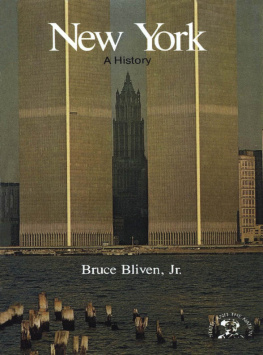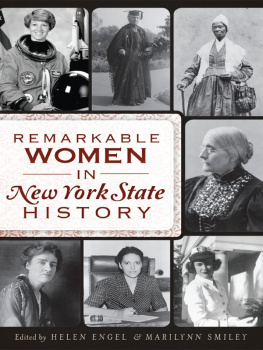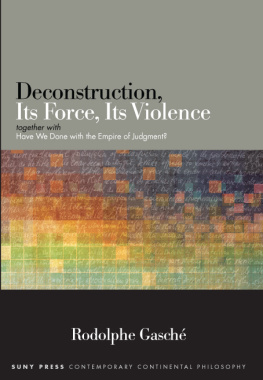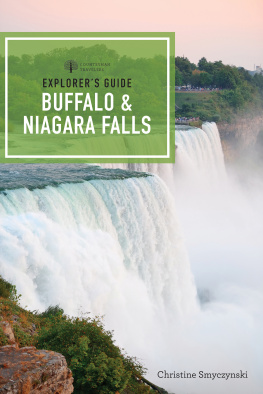New York
Copyright 1981
American Association for State and Local History
Nashville, Tennessee
All rights reserved
Published and distributed by
W. W. Norton & Company, Inc.
500 Fifth Avenue
New York, New York 10110
Library of Congress Catalogulng-in-Publication Data
Bliven, Bruce, 1916
New York, a Bicentennial history.
(The States and the Nation series)
Bibliography: p.
Includes index.
1. New York (State)History. I. Title. II.Series: States and the Nation series.
F119.B69 974.7 80-26246
ISBN: 978-0-393-34861-3 (e-book)
THE STATES AND THE NATION SERIES, of which this volume is a part, is designed to assist the American people in a serious look at the ideals they have espoused and the experiences they have undergone in the history of the nation. The content of every volume represents the scholarship, experience, and opinions of its author. The costs of writing and editing were met mainly by grants from the National Endowment for the Humanities, a federal agency. The project was administered by the American Association for State and Local History, a nonprofit learned society, working with an Editorial Board of distinguished editors, authors, and historians, whose names are listed below.

EDITORIAL ADVISORY BOARD
James Morton Smith, General Editor
Director, State Historical Society
of Wisconsin
William T. Alderson, Director
American Association for
State and Local History
Roscoe C. Born
Vice-Editor
The National Observer
Vernon Carstensen
Professor of History
University of Washington
Michael Kammen, Professor of
American History and Culture
Cornell University
Louis L. Tucker
President (19721974)
American Association for
State and Local History
Joan Paterson Kerr
Consulting Editor
American Heritage
Richard M. Ketchum
Editor and Author
Dorset, Vermont
A. Russell Mortensen
Assistant Director
National Park Service
Lawrence W. Towner
Director and Librarian
The Newberry Library
Richmond D. Williams
President (19741976)
American Association for
State and Local History
MANAGING EDITOR
Gerald George
American Association for
State and Local History
Contents
Illustrations
My system for choosing these few books from the vast number that have been written about New York is simple: I like them. Some are books to read, some are books to look things up in, some are both. In one way or another, Ive needed them all in writing this book.
Robert G. Albion. The Rise of New York Port, 18151860. New York: Charles Scribners Sons, 1970.
Charles M. Andrews. The Colonial Background of the American Revolution. New Haven, Conn.: Yale University Press, 1931.
Charles A. and Mary R. Beard. The Rise of American Civilization. New York: The Macmillan Co., 1946.
Meyer Berger. Meyer Bergers New York. New York: Random House, 1960.
Bruce Bliven, Jr. Battle for Manhattan. New York: Henry Holt & Co., 1956.
Bruce Bliven, Jr. Under the Guns: New York 17751776. New York: Harper & Row, 1972.
Carl Bridenbaugh. Cities in Revolt: Urban Life in America 17431776. New York: Alfred A. Knopf, 1955.
Carl Carmer. The Tavern Lamps are Burning. New York: David McKay, 1964.
Carl Carmer. The Hudson. Revised edition. New York: Grosset & Dunlap, 1968.
George Dangerfield. Chancellor Robert R. Livingston of New York 17461813. New York: Harcourt, Brace & Co., 1960.
Marshall B. Davidson. New York: A Pictorial History. New York: Charles Scribners Sons, 1977.
Elmer Davis. History of the New York Times 18511921. New York: Greenwood Press, 1921.
David M. Ellis, James A. Frost, Harold C. Syrett, and Harry J. Carman. A History of New York State. Ithaca, N.Y.: Cornell University Press, 1967.
Douglas Southall Freeman. George Washington: A Biography. 7 vols. New York: Charles Scribners Sons, 19481957.
James T. Flexner. History of American Painting. 3 vols. New York: Dover Books, 1962.
James T. Flexner. Young Hamilton: A Biography. Boston: Little, Brown & Co., 1978.
Alexander C. Flick, editor. History of the State of New York. 10 vols. New York: Columbia University Press, 1937.
Nathan Glazer and Daniel P. Moynihan. Beyond the Melting Pot. Cambridge, Mass.: Massachusetts Institute of Technology and Harvard University Press, 1963.
Michael G. Kammen. Colonial New York: A History. New York: Charles Scribners Sons, 1975.
John A. Kouwenhoven. The Columbia Historical Portrait of New York. New York: Doubleday & Co., 1953.
Susan E. Lyman. The Story of New York. New York: Crown Publishers, 1964.
John C. Miller. Origins of the American Revolution. Boston: Little, Brown & Co., 1943.
Lloyd Morris. Incredible New York. New York: Random House, 1951.
New York: A Guide to the Empire State. New York: Oxford University Press, 1941.
V. S. Pritchett. New York Proclaimed. New York: Harcourt, Brace & World, 1965.
Kate Simon. Fifth Avenue: A Very Social History. New York: Harcourt, Brace, Jovanovich, 1978.
Alfred E. Smith. Up to Now: An Autobiography. New York: Viking Press, 1929.
I. N. P. Stokes. The Iconography of Manhattan Island, 14981909. 6 vols. New York: R. H. Dodd, 19151928; reissued, New York: Arno Press, 1967.
Henri and Barbara Van der Zee. A Sweet and Alien Land: The Story of Dutch New York. New York: Viking Press, 1978.
Christopher Ward. The War of the Revolution. 2 vols. New York: The Macmillan Co., 1952.
M. R. Werner. Tammany Hall. Second edition. New York: Greenwood Press, 1968.
James G. Wilson, editor. The Memorial History of New York. 2 vols. New York: New York History Co., 1892.



To Naomi and Fred
IN 1807, former President John Adams argued that a complete history of the American Revolution could not be written until the history of change in each state was known, because the principles of the Revolution were as various as the states that went through it. Two hundred years after the Declaration of Independence, the American nation has spread over a continent and beyond. The states have grown in number from thirteen to fifty. And democratic principles have been interpreted differently in every one of them.
We therefore invite you to consider that the history of your state may have more to do with the bicentennial review of the American Revolution than does the story of Bunker Hill or Valley Forge. The Revolution has continued as Americans extended liberty and democracy over a vast territory. John Adams was right: the states are part of that story, and the story is incomplete without an account of their diversity.
The Declaration of Independence stressed life, liberty, and the pursuit of happiness; accordingly, it shattered the notion of holding new territories in the subordinate status of colonies. The Northwest Ordinance of 1787 set forth a procedure for new states to enter the Union on an equal footing with the old. The Federal Constitution shortly confirmed this novel means of building a nation out of equal states. The step-by-step process through which territories have achieved self-government and national representation is among the most important of the Founding Fathers legacies.













